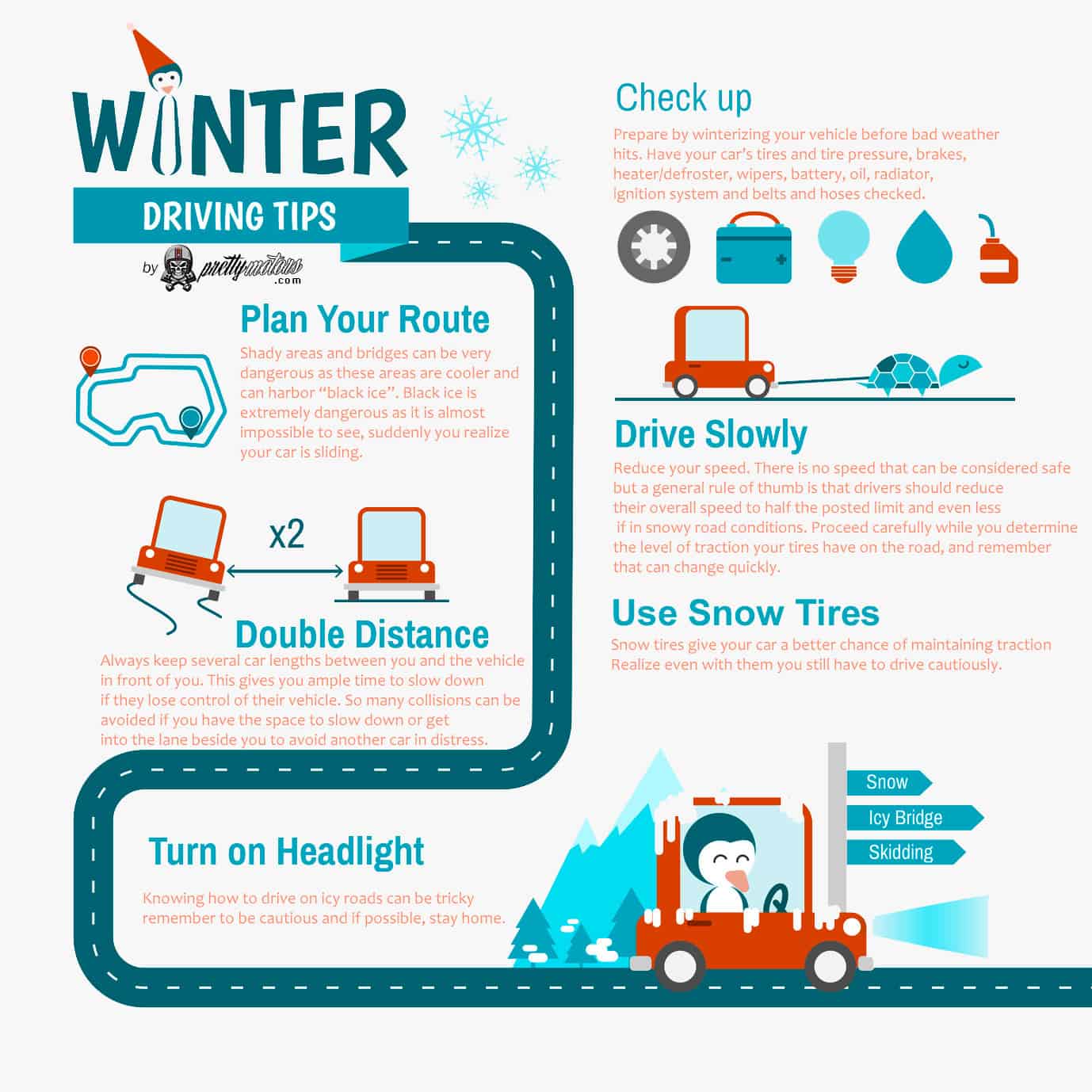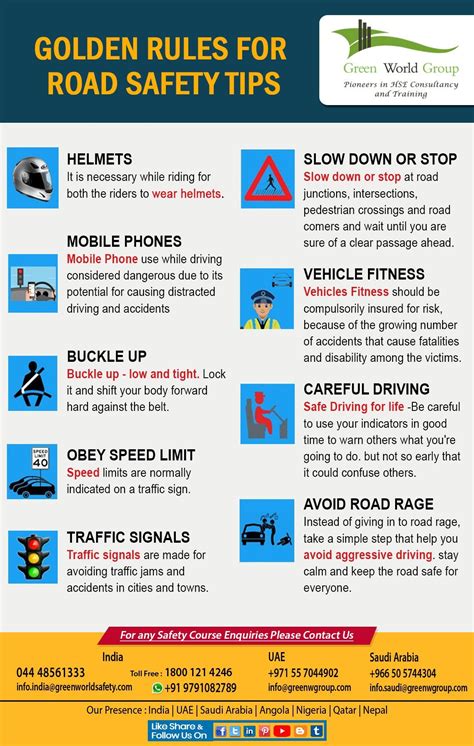Safe driving is a crucial aspect of road safety, and it is essential for all drivers to follow certain guidelines to minimize the risk of accidents. According to the World Health Organization (WHO), approximately 1.35 million people die every year as a result of road traffic accidents, and many more are injured. In this article, we will discuss five tips for safe driving that can help reduce the risk of accidents and ensure a safe journey for all road users.
Key Points
- Always wear a seatbelt and ensure all passengers are buckled up
- Never use a mobile phone while driving, as it can be a significant distraction
- Maintain a safe following distance to allow for sufficient stopping time
- Be aware of your surroundings and anticipate potential hazards
- Never drive when tired or under the influence of substances that can impair your ability to drive safely
Tip 1: Wear a Seatbelt and Ensure All Passengers Are Buckled Up

Wearing a seatbelt is one of the most effective ways to reduce the risk of injury or death in the event of a crash. According to the National Highway Traffic Safety Administration (NHTSA), seatbelts can reduce the risk of fatal injury by up to 45% and the risk of moderate to serious injury by up to 50%. It is essential to ensure that all passengers, including children, are buckled up before starting the journey. Children under the age of 12 should be seated in the back seat, and infants should be secured in a rear-facing car seat.
The Importance of Seatbelt Use
Seatbelts work by restraining the body in the event of sudden stops or crashes, preventing occupants from being thrown around the vehicle or ejected from the vehicle. This can help reduce the risk of head and spinal cord injuries, as well as internal injuries. Additionally, seatbelts can help prevent occupants from being crushed by the steering wheel or dashboard in the event of a crash.
| Seatbelt Use | Injury Reduction |
|---|---|
| 45% | Fatal injury reduction |
| 50% | Moderate to serious injury reduction |

Tip 2: Never Use a Mobile Phone While Driving

Using a mobile phone while driving can be a significant distraction, increasing the risk of accidents. According to the NHTSA, distracted driving was responsible for 3,166 deaths in motor vehicle crashes in 2017. Mobile phones can be a major distraction, as they can take your eyes off the road and your hands off the wheel. It is essential to avoid using a mobile phone while driving, including texting, browsing, or making calls.
The Risks of Distracted Driving
Distracted driving can increase the risk of accidents by taking your attention away from the road. This can include visual distractions, such as looking at a phone or navigation system, manual distractions, such as eating or grooming, and cognitive distractions, such as talking to passengers or daydreaming. It is essential to avoid all forms of distracted driving to minimize the risk of accidents.
Tip 3: Maintain a Safe Following Distance
Maintaining a safe following distance is essential to allow for sufficient stopping time in the event of an emergency. According to the American Automobile Association (AAA), the recommended following distance is at least 2-4 seconds. This can help prevent rear-end collisions and give you sufficient time to react to hazards on the road.
The Importance of Following Distance
Following distance is critical, as it can help prevent accidents by giving you sufficient time to react to hazards. A safe following distance can also help reduce the risk of rear-end collisions, which can be caused by tailgating or following too closely. It is essential to adjust your following distance according to road conditions, such as weather, traffic, and road surface.
Tip 4: Be Aware of Your Surroundings and Anticipate Potential Hazards
Being aware of your surroundings and anticipating potential hazards is essential for safe driving. According to the NHTSA, anticipating potential hazards can help reduce the risk of accidents by giving you sufficient time to react. This can include being aware of other road users, such as pedestrians, cyclists, and other vehicles, as well as road conditions, such as potholes, construction, and weather.
The Importance of Situational Awareness
Situational awareness is critical, as it can help you anticipate potential hazards and react accordingly. This can include being aware of your surroundings, such as other road users and road conditions, as well as being aware of your vehicle’s limitations and capabilities. It is essential to stay alert and focused on the road at all times to minimize the risk of accidents.
Tip 5: Never Drive When Tired or Under the Influence of Substances

Driving when tired or under the influence of substances can significantly increase the risk of accidents. According to the NHTSA, drowsy driving was responsible for an estimated 91,000 police-reported crashes in 2017, resulting in an estimated 50,000 injuries and 800 deaths. It is essential to avoid driving when tired or under the influence of substances, such as alcohol or drugs, as they can impair your ability to drive safely.
The Risks of Impaired Driving
Impaired driving can increase the risk of accidents by impairing your ability to react to hazards and make safe decisions. This can include driving when tired, as well as driving under the influence of substances, such as alcohol or drugs. It is essential to avoid all forms of impaired driving to minimize the risk of accidents.
What are the most common causes of accidents on the road?
+The most common causes of accidents on the road include distracted driving, speeding, and impaired driving. Additionally, failure to wear a seatbelt and follow safe driving practices can also contribute to the risk of accidents.
How can I improve my situational awareness while driving?
+To improve your situational awareness while driving, it is essential to stay alert and focused on the road at all times. This can include avoiding distractions, such as using a mobile phone, and being aware of your surroundings, including other road users and road conditions.
What are the consequences of driving under the influence of substances?
+Driving under the influence of substances can have severe consequences, including increased risk of accidents, injuries, and fatalities. Additionally, it can also result in legal penalties, such as fines and imprisonment, and can damage your reputation and relationships.
In conclusion, safe driving is essential for minimizing the risk of accidents and ensuring a safe journey for all road users. By following the five tips outlined in this article, including wearing a seatbelt, avoiding distracted driving, maintaining a safe following distance, being aware of your surroundings, and avoiding impaired driving, you can significantly reduce the risk of accidents and stay safe on the road. Remember, safe driving is a shared responsibility, and it requires the cooperation and attention of all road users.



